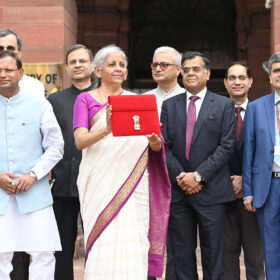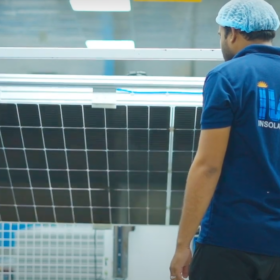As India commemorates another year of independence, a new chapter is being written, powered by clean, sustainable energy. This narrative explores India’s burgeoning solar industry as a beacon of self-sufficiency and environmental stewardship, capturing a remarkable journey. The dawn of Independence Day shines a light on a drive for energy sovereignty, with the solar sector at the forefront. It represents a commitment to forging a resilient future, symbolizing progress, economic growth, energy independence, and a greener world.
India’s march towards an economy poised to hit a $1 trillion manufacturing value by 2025 is a testament to its progress. Flourishing sectors including energy, steel, fertilizer, cement, and refineries have thrived, fuelled by recent reforms and policies. Amidst this momentum, one sector has emerged as crucial for transformative change—one that marries economic growth with environmental consciousness. The promise of a clean energy transition offered by the solar industry has placed it at the heart of India’s sustainable journey.
India’s leadership in the green revolution has been a significant factor in its sustainable development. The country has made substantial strides in sustainable agriculture, improving food security, and reducing poverty. The green revolution has also paved the way for India’s solar manufacturing industry, providing a foundation for sustainable energy production.
In recent years, India’s solar industry has seen remarkable growth, with its installed solar capacity skyrocketing from a mere 10 MW in 2010 to an impressive 70.01 GW by June 2023. This achievement not only includes surpassing its Nationally Determined Contributions target ahead of schedule, but also securing a prominent fourth global ranking in solar power generation. This growth can be attributed to several key factors that drive India’s renewable energy journey.
Government’s decisive actions
The leadership of Prime Minister Shri Narendra Modi has been instrumental in shaping a future-ready India. Policies crafted to align with industry needs and foreign investment inflows have laid the foundation for solar industry growth.
The imposition of Basic Customs Duty (BCD) and the enhanced Production Linked Incentive (PLI) scheme have invigorated the industry’s potential. A total integrated capacity of 8,737 MW was allocated under Tranche-I of the Scheme in November-December 2022. When considering both tranches, the domestic solar PV module manufacturing capacity allocated under the PLI Scheme totals 48,337 MW, with cumulative support of ₹18,500 crore by the Government.
Technological advancement
Innovative strides in solar technology are reshaping the energy landscape. Floating PV panels are harnessing solar energy while optimizing space, finding homes on water reservoirs like the expansive 48-acre installation in Tamil Nadu. This approach not only boosts electricity production through cooler panels but also curtails maintenance expenses.
Another breakthrough, half-cell technology, slices solar cells into halves, enhancing electron flow efficiency. With reduced resistance, these modules boast greater durability, especially under high heat conditions, ensuring sustained performance and resistance to panel malfunction.
Foreign direct investment
India’s trajectory toward a sustainable energy landscape is marked by an astonishing rise in solar power. As of December 2022, the cumulative Foreign Direct Investment (FDI) in India’s renewable sector was $12.47 billion (INR 1 trillion). The total FDI inflows received in FY 2023, which includes equity inflows, reinvested earnings, and other capital sources, amounted to $70.97 billion – a decrease from the $84.83 billion recorded during FY 2022.
The real testament lies in the colossal leap from a mere 10 MW of installed solar capacity in 2010 to an impressive 70.01 GW AC as of June 2023. Solar power generation in India ranked fourth globally in 2021.
In conclusion, it’s evident that the Indian government is actively steering the nation towards a sustainable and environmentally-conscious energy future. However, this juncture calls for a strategic alignment of protective measures to ensure their intended outcomes, notably reducing India’s reliance on energy imports and positioning the nation as a global hub for solar manufacturing.
Accelerating the growth of a domestic solar equipment-manufacturing ecosystem emerges as the pivotal pathway to materialize the vision of a self-reliant India.
The views and opinions expressed in this article are the author’s own, and do not necessarily reflect those held by pv magazine.
This content is protected by copyright and may not be reused. If you want to cooperate with us and would like to reuse some of our content, please contact: editors@pv-magazine.com.








By submitting this form you agree to pv magazine using your data for the purposes of publishing your comment.
Your personal data will only be disclosed or otherwise transmitted to third parties for the purposes of spam filtering or if this is necessary for technical maintenance of the website. Any other transfer to third parties will not take place unless this is justified on the basis of applicable data protection regulations or if pv magazine is legally obliged to do so.
You may revoke this consent at any time with effect for the future, in which case your personal data will be deleted immediately. Otherwise, your data will be deleted if pv magazine has processed your request or the purpose of data storage is fulfilled.
Further information on data privacy can be found in our Data Protection Policy.